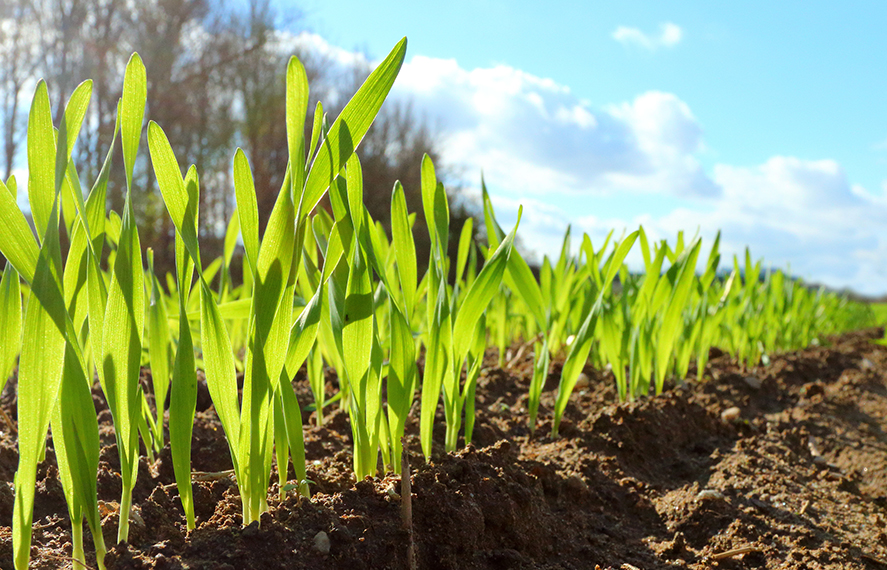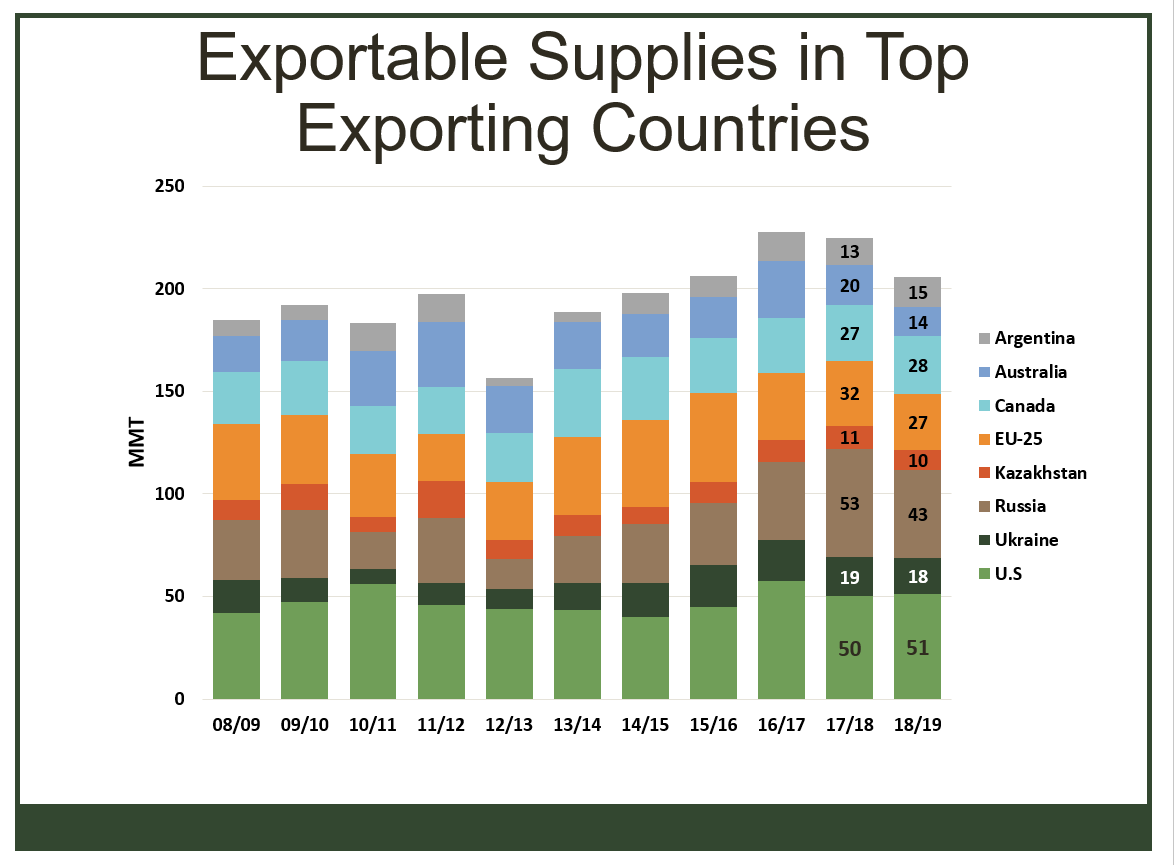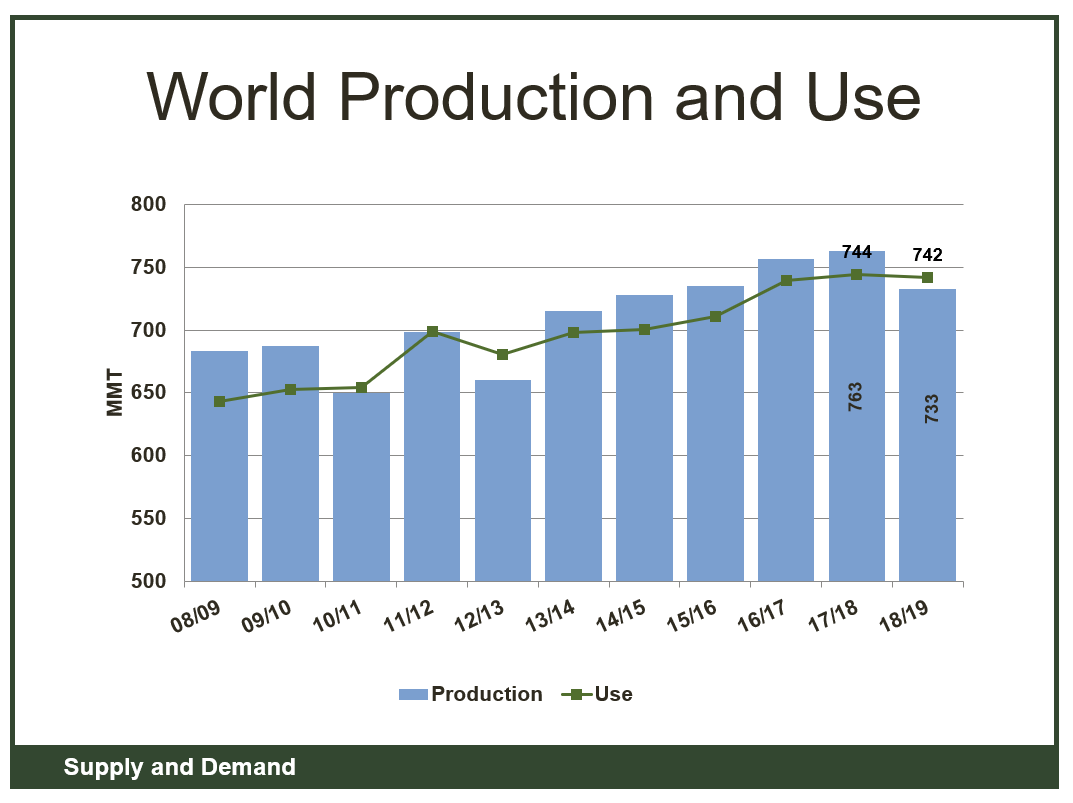Main Takeaways from the USDA’s March 2019 World Wheat Supply and Demand Report
By Claire Hutchins, USW Market Analyst
USDA updated its monthly World Agricultural Supply and Demand Estimates (WASDE) on Mar. 8, showing decreased global production and domestic consumption but steady global trade. USDA pegged 2018/19 global production at 733 million metric tons (MMT), 3 percent below last year’s volume of 763 MMT. The United States holds the most exportable supplies at 51 MMT, while Russia’s fall in at 43 MMT, Canada’s at 28 MMT, and the European Union’s (EU) at 27 MMT.
Global consumption estimates dropped by 5 MMT between February and March to 742 MMT, driven primarily by a 3 percent decrease in expected Indian domestic consumption for 2018/19. Indian wheat consumption will account for nearly 13 percent of total global consumption in 2018/19, while its final import levels will make up less than 1 percent of expected global wheat imports. Though 2018/19 global consumption is expected to fall below last year’s record of 744 MMT, total global trade holds nearly as high as 2017/18 levels at 179 MMT, 3 percent above the 5-year average of 173 MMT.
The EU and Argentina are expected to export 23.0 MMT and 14.2 MMT respectively, both upward revisions from February’s WASDE report. USDA lowered its 2018/19 U.S. wheat export estimate to 26.3 MMT, down 3 percent from the February estimate of 27.2 MMT. USDA dropped expected hard red spring exports by 680,000 metric tons (MT) to 7.48 MMT and white (soft white and hard white) exports by 272,000 MT to 5.72 MMT. Year-to-date commercial sales of 22.6 MMT comprise 86 percent of the USDA’s new 2018/19 export figure. This time last year, USDA expected U.S. wheat exports to total 25.2 MMT. Commercial sales a year ago totaled 22.1 MMT, or 88 percent of USDA’s 2017/18 total expected export volume as of March 2018. With 12 weeks left to go of marketing year 2018/19, the United States must sell 3.7 MMT of wheat to hit the USDA’s current export projection.
Each month, U.S. Wheat Associates (USW) updates a graphic summary of USDA’s WASDE (World Agricultural Supply and Demand Estimates) report. View the March summary here.




